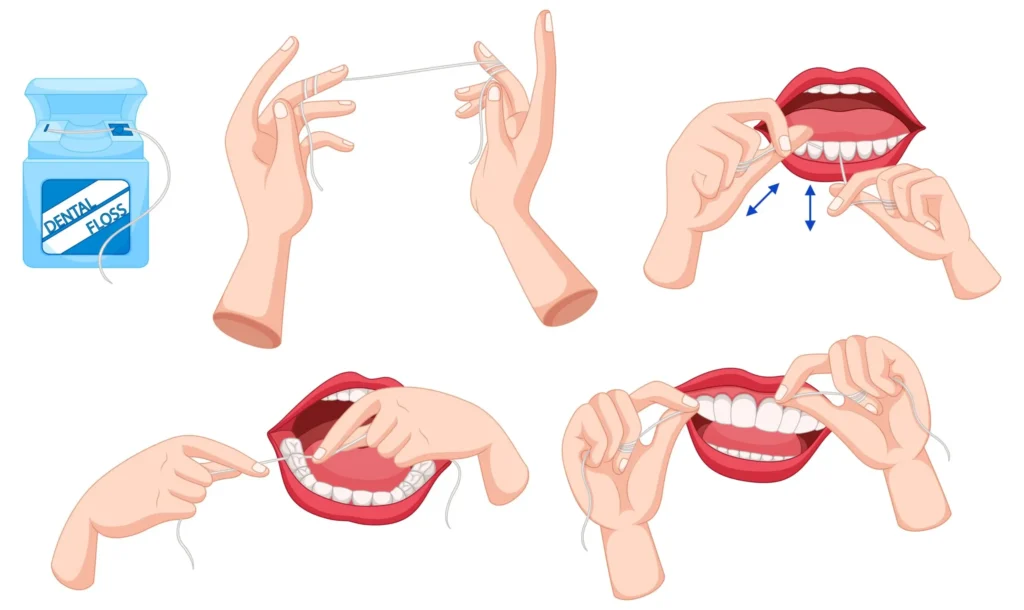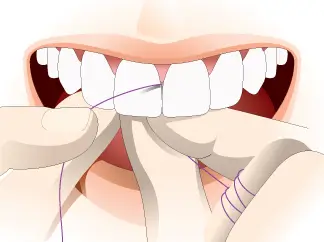Does Flossing Actually Prevent Cavities?
Flossing is often recommended as an essential part of oral hygiene, but many people wonder whether it truly helps prevent cavities. With conflicting opinions and studies, it’s important to understand the role of flossing in dental health and whether it is a necessary habit for cavity prevention. In this article, we will explore how flossing works, its benefits, the scientific evidence behind its effectiveness, and expert recommendations on how to incorporate it into your daily routine.


How Do Cavities Form?
Cavities, or dental caries, occur when bacteria in the mouth produce acids that erode tooth enamel. The process involves several stages:
- Plaque Formation – Bacteria and food particles accumulate on teeth, forming a sticky film called plaque.
- Acid Production – Bacteria feed on sugars and starches, releasing acids that weaken enamel.
- Enamel Erosion – Prolonged acid exposure causes demineralization, leading to the formation of cavities.
- Decay Progression – If untreated, cavities grow, affecting deeper layers of the tooth and causing pain or infection.
Plaque can accumulate in areas that are difficult to clean with a toothbrush, such as between the teeth and under the gumline. This is where flossing plays a crucial role.
The Role of Flossing in Preventing Cavities
Flossing is designed to remove food particles and plaque from areas that a toothbrush cannot reach, particularly between teeth and along the gumline. Here’s how it contributes to cavity prevention:
1. Removes Plaque Between Teeth
Brushing cleans the surface of teeth, but it doesn’t reach the tight spaces between them. Flossing helps eliminate plaque buildup in these areas, reducing the risk of decay.
2. Prevents Tartar Buildup
Plaque hardens into tartar if not removed. Tartar can only be removed by a dentist and increases the likelihood of cavities and gum disease.
3. Reduces Bacteria and Acid Production
Flossing removes trapped food particles, depriving bacteria of a food source and limiting acid production that erodes enamel.
4. Helps Maintain Healthy Gums
Healthy gums support strong teeth. Flossing reduces the risk of gum inflammation (gingivitis), which, if left untreated, can lead to gum disease and increased cavity risk.
5. Improves Overall Oral Health
It not only prevents cavities but also contributes to fresher breath, reduced gum disease risk, and better long-term dental health.
Scientific Evidence: Does It Work?
While there has been some debate, multiple studies support the benefits of flossing:
- A study published in the Journal of Dental Research found that individuals who floss regularly have lower rates of interproximal cavities (cavities between teeth) than those who don’t.
- Research from the American Dental Association (ADA) states that flossing helps remove plaque and prevents periodontal diseases, which are linked to increased cavity risk.
- A review by the Cochrane Collaboration indicated that flossing, combined with brushing, reduces plaque more effectively than brushing alone.
- The Centers for Disease Control and Prevention (CDC) also advocates for it as part of a comprehensive oral hygiene routine.
How to Floss Properly for Maximum Effectiveness
To gain the full benefits of flossing, it’s important to use the correct technique:
Step 1: Choose the Right Floss
There are different types of dental floss, including waxed, unwaxed, and tape floss. Choose one that suits your teeth spacing and comfort.
Step 2: Use Enough Floss
Cut about 18 inches of floss and wind most of it around your middle fingers, leaving a few inches to work with.
Step 3: Glide Gently Between Teeth
Insert the floss gently between your teeth, moving it up and down in a C-shape against the sides of each tooth.
Step 4: Avoid Snapping the Floss
Be careful not to force or snap the floss into the gums, as this can cause irritation or bleeding.
Step 5: Use a Clean Section for Each Tooth
Move to a fresh section of floss as you progress to avoid spreading plaque and bacteria.
Step 6: Floss at Least Once a Day
Consistency is key to maintaining oral health and preventing cavities.
Alternatives to Traditional Flossing
For those who find traditional it difficult, several alternatives can help maintain interdental cleanliness:
- Water Flossers – Devices that use a stream of water to clean between teeth.
- Interdental Brushes – Small brushes designed to remove plaque from between teeth.
- Floss Picks – Disposable plastic tools with a short piece of floss attached.
- Soft Picks – Rubber-tipped tools for cleaning between teeth gently.
Common Myths About Flossing
Myth 1: Flossing Isn’t Necessary if You Brush Well
Even the best toothbrush can’t clean between teeth effectively. it is essential for reaching hidden plaque and food particles.
Myth 2: Flossing Causes Gaps Between Teeth
Flossing does not create gaps; rather, it removes debris that may cause gums to recede, leading to the appearance of gaps.
Myth 3: Bleeding Gums Mean You Should Stop Flossing
If your gums bleed while flossing, it may be due to inflammation from plaque buildup. Regular it can improve gum health and reduce bleeding over time.
Myth 4: You Can Get the Same Benefits from Mouthwash
Mouthwash can help kill bacteria but does not physically remove plaque and debris likeit does.
How Often Should You Floss?
The American Dental Association recommends it at least once a day to maintain optimal oral health. it before bedtime is ideal since plaque and bacteria can accumulate overnight.
Expert Recommendations
- Dr. John Smith, DDS: “Flossing is a simple habit that makes a significant difference in preventing cavities and gum disease. It should be part of everyone’s daily routine.”
- Dr. Emily Carter, Dental Hygienist: “If you struggle with traditional floss, try using a water flosser or interdental brushes to maintain your gum health.”
Conclusion
Flossing is a crucial part of oral hygiene that significantly contributes to cavity prevention by removing plaque and food particles from hard-to-reach areas. While some may debate its necessity, scientific evidence supports its effectiveness in reducing cavities and gum disease. By incorporating proper it techniques into your daily routine and choosing the right it method for your needs, you can protect your teeth and maintain a healthy smile for years to come.
